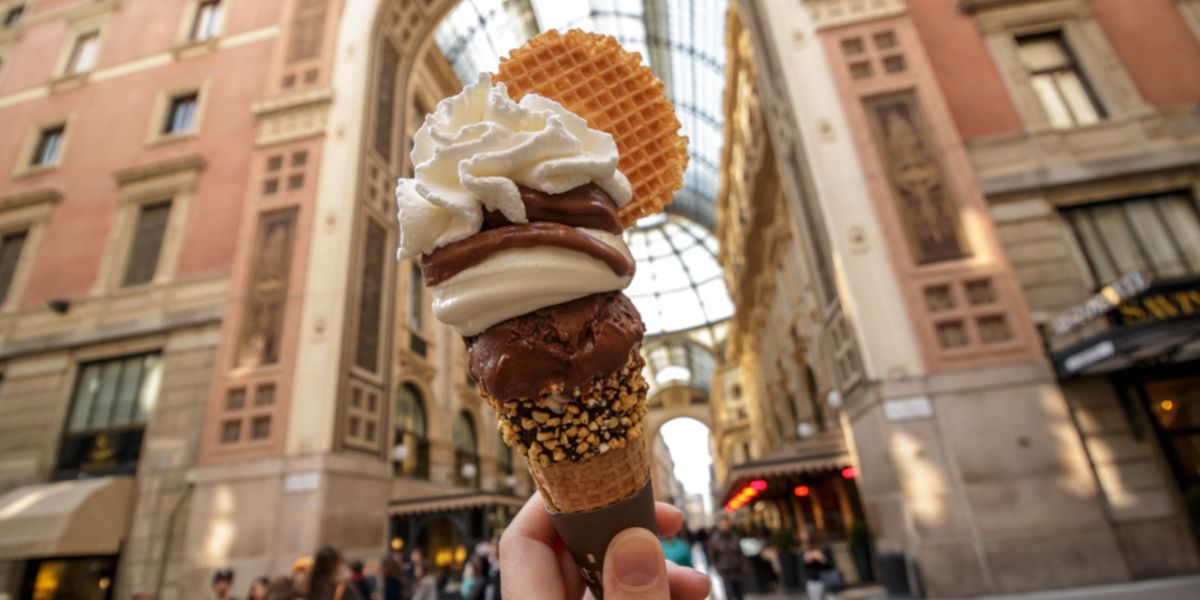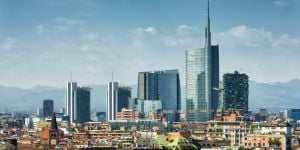
Pasta, rice, vegetables, good meat and all kinds of sweets, Milanese cuisine is about eating simply but with taste and elegance. The gastronomy of this city has managed to find the balance between slow food, innovation and gustatory perfection.
Understanding the food scene in Milan
The act of eating is a social phenomenon in Milan, as it is in the rest of Italy. Gastronomy is an integral part of the daily life of the Milanese and, in addition to the restaurant business, is the subject of numerous events such as cooking shows, fairs and local festivals that highlight local products. In Milan, there are many restaurants serving typical Lombardy dishes, dishes influenced by all the regions of Italy, but also a wide range of foreign restaurants. It must be said that, like fashion, food is very important, making the city a paradise for gourmets and a bottomless pit of temptation for dieters.
Typical Milanese dishes
Milanese cuisine is influenced by its past and its atypical geography of plains at the foot of mountains. In the south of the province of Milan, rich in waterways, rice is grown and used for risotto recipes. Meat dishes and cured meats are the result of extensive cattle and pig farming. The region, being generally wet and cold in winter, is known for its comfort food of soups, boiled dishes, and rich pasta and risottos. Each Milanese dish reveals the history of the city and its crucial role as a center of economic exchange. Among the most typical Milanese preparations are:
- Risotto allo zafferano (Milanese risotto with saffron)
- Cotoletta alla milanese (breaded cutlet)
- Osso buco
- Trippa alla milanese
- Mondeghili (small veal meatballs)
- Cassöeula, a dish of simmered pork and cabbage
- Panettone (famous Christmas brioche)
- Polenta (mashed potatoes made from corn flour)
Milan's gastronomic culture also has famous cheeses, such as Gorgonzola and Mascarpone, both born in Lombardy. Other Lombard cheeses that are also known and appreciated here and in the rest of the world are Taleggio and Grana Padano.
Carbohydrates are considered essential and are eaten in the form of pasta, rice, polenta, or grains such as segale (rye), orzo (barley) and grano (wheat). Soups are also very common and usually combine cereals and legumes with fresh vegetables: the famous minestrone, which often goes with vegetables such as courgettes, squash, asparagus, carrots, broccoli, peas and green beans.
The steps of a Milanese meal
Eating is a very popular and complex activity in Italy, so the meal is divided into phases, each of which offers pleasure in itself.
The antipasto is served at the table before the meal. This is a starter that can be composed of various marinated cold cuts and meats such as salami, cooked salami or ham, speck, or bresaola, the famous thinly sliced dried beef. It can also be served with cheese. There is also a vegetarian variant with vegetable dishes such as grilled courgettes or peppers, pan-fried spinach, or in winter, grilled radicchio, as well as small pies/quiches with cheese cream.
Then come the primi piatti, usually consisting of pasta, risotto, or legumes (lentil soup, grain and vegetable soup, etc.).
Now it's the turn of secondi piatti, made with meat such as beef, pork, wild boar (cinghiale), or fish. Again, a vegetarian or even vegan variant is always possible. The secondi are accompanied by contorni, which include seasonal vegetables, potatoes, or polenta. It should be noted that some restaurants offer single dishes (primo and secondo together) because the quantities are sometimes substantial. This is particularly the case with risotto alla milanese served with osso-buco.
Finally comes the dessert, the dolce: for example, a tiramisù (or other desserts with a spoon: mousse, cream, bavarois), a cake such as torta sbrisolona (a shortcrust pastry with fruit or chocolate covered with a crumble), fresh fruit or homemade sorbets/ice creams in the summer, all accompanied by digestives such as grappa, an amaro (a bitter digestive made from herbs) or limoncello. The traditional espresso coffee is also a must, sometimes replaced by café d'orzo, a decaffeinated option made from roasted barley.
Where to eat in Milan
In Milan, a trattoria is often considered more relaxed and friendly than a restaurant. The following are among the best places in Milan offering local cuisine:
- Non solo lesso
- Antica Trattoria della Pesa
- Trattoria la Pesa dal 1902
- Trattoria Masuelli
- Trattoria Arlati
- Trattoria del nuovo Macello, Consorzio Stoppani and Osteria Brunello for a good Milanese-style cutlet.
The following places also borrow some dishes from other regions of Italy:
- Cocciuto, Pizzium, Sorbillo or Da Zero for a good pizza
- Giulio Pane e Ojo or Da Felice a Testaccio for a touch of Roman cuisine
- Fishbar, opened by the starred chef Eugenio Boer
- Eataly restaurants, if you want to eat well while shopping in a quality grocery shop
- Miscusi, a good address for pasta lovers.
Milan is also naturally home to more chic restaurants such as Ratanà, which has successfully combined traditional and modern Italian-Milanese cuisine, Locanda Perbellini and Osteria Brunello, but also and above all, many Michelin-starred restaurants, for example:
- Cracco (chef Carlo Cracco)
- Bu:r (chef Eugenio Boer)
- Enrico Bartolini al Mudec (chef Enrico Bartolini)
- Berton (chef Andrea Berton)
- D'O (chef Davide Oldani)
- Felix lo Basso Home & Restaurant (chef Felice Lo Basso).
Another good address to try is Identità Golose: it is a hub of Italian and Milanese gastronomy that hosts a restaurant, events and cooking workshops. Resident and guest chefs, both young and renowned, alternate to offer menus that vary according to the season and current events. The program, the menus and the different experiences are available on their website Identità Golose.
Lombardy is the most-starred region in Italy, with 59 starred restaurants (51 *, 2 **, 3 ***), followed by Campania (48) and Piedmont (44).
For a unique culinary experience in Milan, try agriturismo: these are farms with accommodation and a restaurant (or trattoria) serving their products. You can stay on the farm and enjoy local food, usually organic. Some of these farms offer rooms for hire for celebrations (birthdays, weddings, etc.).
Here are some must-try restaurants:
- Cascina Pietrasanta
- Cascina Caremma
- La Barcella
Still in Lombardy but further afield:
- Agriturismo Ferdy
- La Fiorida
- Solimago Dimora Storica (organic agriturismo that also caters for vegetarians and vegans)
- Corte Reginella
- Tenuta dell'Annunziata.
Snacks and other treats in Milan
It is impossible to talk about gastronomy in Milan without mentioning its pastries and ice cream. There is no shortage of alternatives: the most famous historical pastry shops include Marchesi, Cova, Cucchi and Clivati (which make panettone all year round) and La Martesana. In addition, they offer pies, brioches, shortbread biscuits and chocolate specialties that are not to be missed.
Other more recent pastry shops that need no introduction include Pavè, Marlà Pasticceria and Knam. If we are talking about ice cream shops, the choice is also very wide. Among the most famous gelaterias are : La Gelateria della Musica, Pavè - Gelati & Granite, Out of the box, Ciacco, which use fresh ingredients without artificial sweeteners or additives, but also Artico and Il Massimo del gelato.
When it comes to snacks, you will have a hard time choosing. If you are short on time or feel like eating on the go in Milan, try the following:
- Panino giusto
- Princi
- Panini Durini
- Luini
- Ravioleria Sarpi
- Trapizzino
- Tramè or l'Altro tramezzino
- Poke House or I love poke
Gastronomy in Italy, a way of life
Italian cuisine is considered one of the tastiest in the world while also being healthy and respectful of raw materials and the seasons. The key to enjoying the products and dishes of Italian and Milanese gastronomy, in particular, is to eat as Italians do, consciously, in moderation, and with great respect for local products. If you are an expatriate in Italy, you will quickly understand that Italians consider gastronomy to be something sacred. One reason for this is that food is synonymous with physical well-being as well as pleasure. It is not uncommon for an activity to revolve exclusively around a meal or a gastronomic event. For example, a weekend trip to the countryside or the mountains is always accompanied, if not justified, by a meal in a restaurant or trattoria.
Useful link:
We do our best to provide accurate and up to date information. However, if you have noticed any inaccuracies in this article, please let us know in the comments section below.








